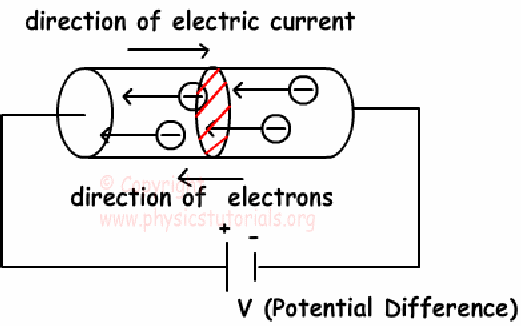An electric current flows whenever electric charges move. An electric current is in fact nothing more than the flow of electric charge. The path they flow along is called the circuit. In order for a sustained current to flow, a circuit must be complete i.e. a loop without breaks.
Current flows through an object as a result of a potential difference across the object. The source of the potential difference may be a power supply, battery, thermocouple or any device capable of creating a voltage.
Though current is defined as the flow of electric charge, the convention has been adopted that current flows always from positive to negative terminals. This would be the path followed by charge carriers if they were positive. This is not usually the path of the actual charge carriers, which are usually negatively charged electrons. These flow from the negative to the positive terminals. The convention was adopted before the nature of electric charge or current were known.

Although current can flow in liquids, gases, or in fact in outer space, in most of the situations in which we are concerned, currents will be flowing in solids, specifically in wires in electric circuits.
In a wire, negatively charged electrons can move freely through a lattice consisting of positively charged metal ions. As they move, the electrons interact with the ions in the lattice, repeatedly colliding with them and giving up some of their energy to them. The lattice ions are made to vibrate about their mean position. This vibrational energy is heat energy, so that when a current flows the metal heats up. The electrons rapidly attain a steady speed throughout the wire, called the drift velocity.
